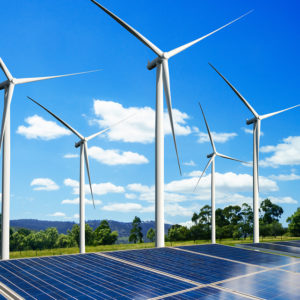Contrary to the claims of green energy profiteers and apologists in the mainstream media, the failure of wind and solar power was largely to blame for the widespread power outages in Texas during the polar freeze that hit the state this past week.
Although the depth and length of the frigid temperatures for much of Texas were highly unusual, they were not historically unprecedented. Texas’ electric grid should have been able to handle the polar freeze as it has in the past.
Before the politics of climate alarmism and cancel culture reared their ugly heads, any engineer would have openly said wind and solar power are unsuited for a large power grid because they are dependent on weather conditions.
A large-scale power grid consists of two segments, baseload power and peaking power. Baseload power is the minimum amount of energy needed for normal daily operations, which requires a fairly constant flow of power. Coal, nuclear, and to a lesser extent natural gas, have satisfied Texas’ baseload demand for the past century because they operate full time.
Peaking power is the additional power needed when the system is faced with unusual amounts of demand, usually in July and August in Texas, when air conditioner use soars. Natural gas has commonly served to provide peaking power because it can be cycled on and off quickly, as needed.
Wind nor solar can be relied upon for either baseload or peaking power. Wind turbines only generate power when the wind blows between certain speeds, and the power they generate fluctuates constantly. Solar provides no power at night or when solar panels are covered by snow or ice and only reduced power on cloudy days and during storms. A power system that depends on weather circumstances is a poor choice.
Wind and solar power now account for approximately 28 percent of Texas’ electric power supply. This increase was not driven by market demand, but by politics. Legislators required a minimum amount of power sold on the Texas power market come from wind or solar power, regardless of the reliability problems it introduces into the power system. On top of that, federal, state, and local subsidies encouraged wind and solar to continue growing beyond the minimum amount set by the state.
The subsidies, tax credits, and tax abatements allow wind and solar producers to sell power into the Texas market below what it costs to produce and deliver. As a result, multiple baseload coal-fueled power plants, accounting for thousands of megawatts of electric power capacity, closed.
Some reports argue wind and solar power can’t be blamed for the widespread power outages that occurred during the recent polar freeze. They claim when the power first began to fail, only a small percentage of wind and solar production went offline. This is true, but lacks context.
Data from the Electric Reliability Council of Texas shows that five days before the first snowflake fell, wind and solar provided 58 percent of the electric power in Texas. But clouds formed, temperatures dropped, and winds temporarily stalled, resulting in more than half the wind and solar power going offline in three days never to return during the storm, when the problems got worse and turbines froze and snow and ice-covered solar panels.
Although natural gas, coal, and nuclear initially picked up the slack when wind and solar failed, after the storm hit, those sources of energy faced their own problems. Some gas lines froze, some equipment failed, and some powerlines snapped and transformers broke. More coal, natural gas, and nuclear failed during the storm than wind and solar, but only because wind and solar had gone offline even before the storm hit.
The result: I and more than eight million Texans in more than four million homes lost lights, power, and heat. Temperatures in my home fell into the 40s. Within the first night I went through all the heating oil in the old-fashioned lamps I keep for outages due to periodic tornados.
Weather, like wind and solar power, is fickle. Because of that, no state should ever rely on wind and solar power as a substantial part of their electric power supply. As Texas showed this past week, and California demonstrates every summer, to do so is to court catastrophic, life-ending, failure.

